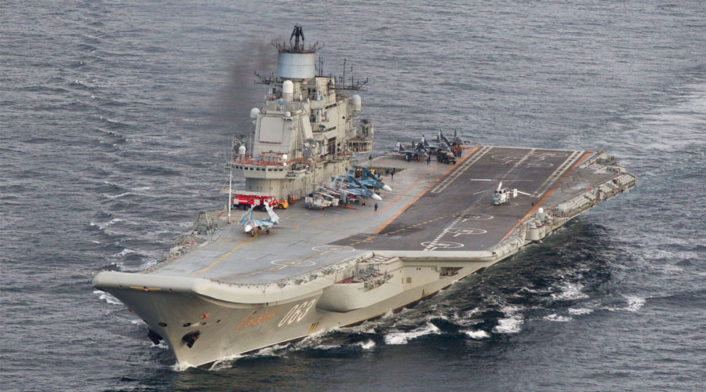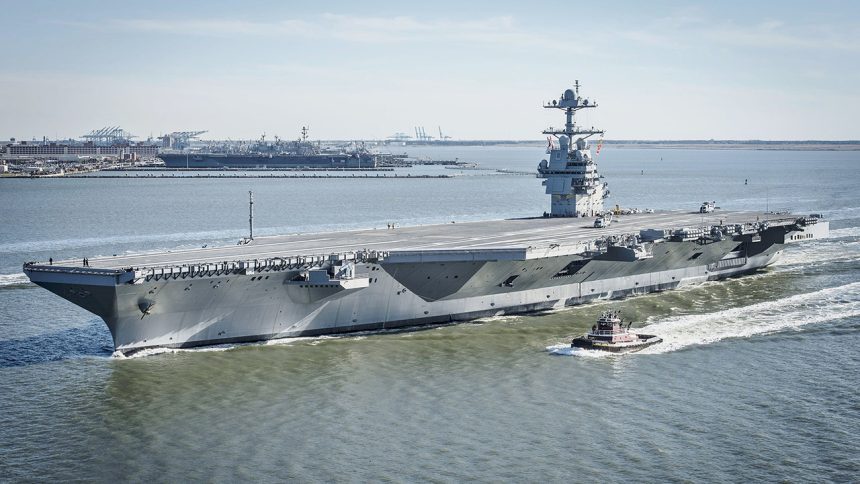UK, China and U.S. Launch New Carrier Classes in 2017, Russia Lags Behind.
The U.S Navy and Newport News Ship Building Company officially commissioned a new class of “supercarrier” advanced nuclear-powered aircraft carrier tomorrow at the Norfolk Naval Station in Norfolk, Virginia.
The USS Gerald R. Ford (CVN-78) is the first ship in this new class of nuclear-powered aircraft carriers for the U.S. Navy. It is the first major redesign of U.S. aircraft carriers in 42 years.
Among a long list of new engineering features on board USS Gerald R. Ford are the controversial electromagnetic catapults and arresting gear, a new, smaller, lower radar cross section island structure, larger and more efficient flight deck facilitating faster aircraft launching, more than twice the electrical power of previous carrier classes and a more efficient crew compliment with 500 fewer personnel on board. The massive 1,106-foot-long carrier displaces a staggering 100,000 tons fully loaded and is powered by two new generation nuclear reactors.
U.S. President Donald Trump has been critical of the costs of the program, especially the new electro-magnetic catapult and arrestor take-off and landing systems. The benefits of the new systems are claimed to be less buffeting of aircraft upon launch resulting in better control and less airframe fatigue per launch and recovery. The electromagnetic catapults are also lighter in weight than steam catapults in use on current U.S. carriers and are claimed to require less maintenance than steam-powered launch and recovery systems.
It’s worth noting that some problems have already occurred in launch testing on other carriers with the U.S. Navy’s version of the F-35 Joint Strike Fighter, the larger wingspan, folding wing F-35C. The problems may have been limited to test launches with no weapons loads and required modifications to F-35C landing gear. Depending on the status of these issues the Navy’s F-35C may benefit in particular from electromagnetic catapults.
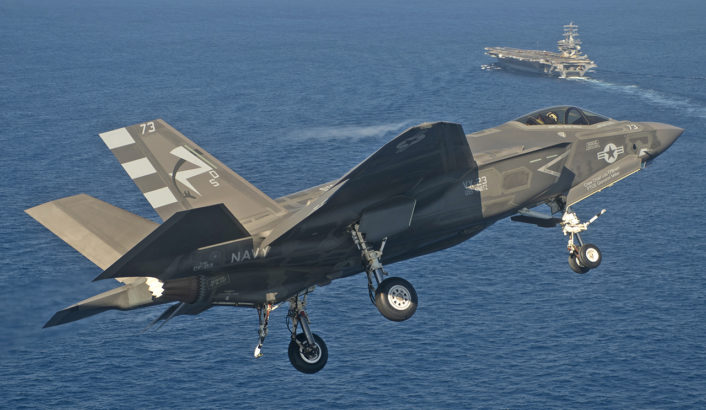
This year has been noteworthy for new international aircraft carrier operations.
On Jul. 17, 2017, the Royal Navy launched the first of its new Queen Elizabeth Class of aircraft carrier. The HMS Queen Elizabeth (RO8) is the first of two carriers in this new class that will include the second vessel, the HMS Prince of Wales (RO9) when it is launched in 2020.
HMS Queen Elizabeth uses non-nuclear electric propulsion that burns primarily diesel fuel. This is a lower cost alternative to the U.S. nuclear powered carrier. HMS Queen Elizabeth is a smaller carrier than its new U.S. counterpart, and intended to operate with a compliment of thirty-six F-35B V/STOL aircraft and four helicopters. The vessel is currently configured without launch catapults, but is engineered to be “backwards and forwards compatible” for retrofitting of a catapult launch system. The vessel is also smaller than its U.S. counterpart, the new USS Gerald R. Ford. The HMS Queen Elizabeth is 920 feet long compared to the USS Gerald R. Ford’s 1,106 foot length. It also displaces “only” 70,600 tons compared to the Ford’s 100,000+ tons of displacement.
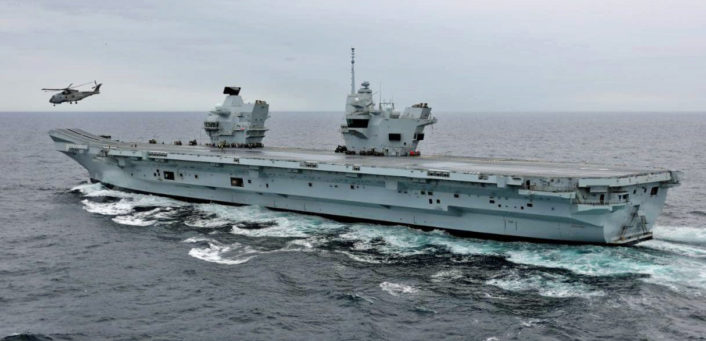
The Chinese have also been vigorous in their carrier development program with the recent launch of the impressive Type 001A, their first indigenous construction carrier. Previous Chinese aircraft carriers were purchased second-hand, mostly from Russia, and served primarily as development testbeds for aircraft, crews and likely doctrine.
This first domestically built Chinese carrier, likely to be named “Shandong”, was officially launched in Dalian, Liaoning province, on Apr. 26, 2017. The Type 001A “Shandong” uses a ski-jump style launch system and an arrestor cable recovery.
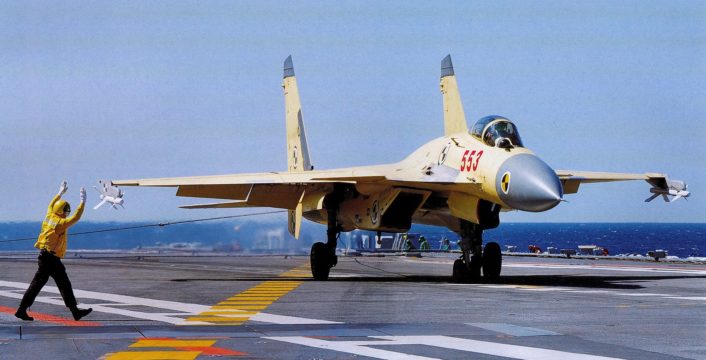
There have been recent photos of Chinese J-15 aircraft with updated landing gear that is both reinforced for carrier landings and, most interestingly, a catapult bar on the nose wheel. The new version of the J-15, referred to frequently as the “J-15A”, is considerably reworked to include not only the landing gear modifications but new engines and avionics.
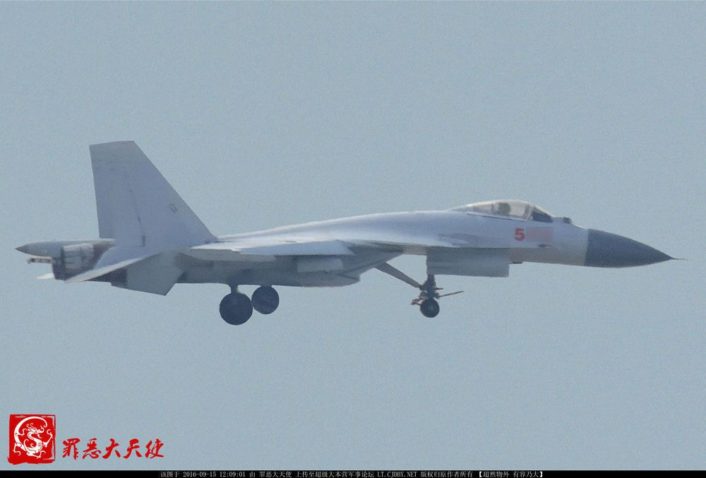
A Jul. 6, 2017 report filed on Chinese media reported that the Chinese People’s Liberation Army Navy, or “PLAN”, is conducting land-based testing on a new electromagnetic catapult similar to the one already installed on the new U.S carrier Gerald R. Ford.
Satellite images showing a land-based catapult launch test facility at Huangdicun Airbase in Liaoning Province, China. The U.S. Naval Institute, an intelligence publications resource, reported that satellite imagery showed two types of catapults located at the Huangdicun facility beginning in late 2014, one steam and one electromagnetic. This base also houses China’s J-15 aircraft on land.
Finally, with news of new aircraft carriers from the United States, China and England an assessment of Russia’s current aircraft carrier capabilities suggests they are lagging behind.
Russia deployed its only carrier, the Admiral Kuznetsov, to the eastern Mediterranean in fall of 2016 in support of operations in Syria. The results could accurately be described as “mixed”.
Kuznetsov, an old ship originally launched in 1985, lost two if its only fifteen aircraft to accidents including an embarrassing one when one of Russia’s most experienced pilots was forced to ditch his aircraft next to the carrier due to problems onboard that prevented him from landing. He was ordered to hold in the landing pattern so long while addressing the onboard recovery problem that his aircraft eventually ran out of fuel. The pilot ejected next to the carrier and was recovered. The aircraft was one of two lost on the Russian adventure to the Mediterranean in support of the President Bashar al-Assad regime in Syria.
The Admiral Kuznetsov has had previous problems on its only seven deployments since 1990.
In 1996, the ship’s potable water distillation system failed and, embarrassingly for the Russians, the U.S. Navy came to the aid of the vessel, supplying fresh drinking water to the crew.
Back in 2015 Russia announced insights into a proposed new, very large aircraft carrier class in the 100,000 ton “supercarrier” range. Russian Deputy-Director of the Krylov State Research Center told IHS Jane’s that the project was being called “Project 23000E” or “Storm”. Budget constraints, Russia’s support of the war in Syria and economic concerns have all but cancelled progress on the project. The most recent intelligence suggests Russia was attempting to partner with India to share development costs in the hopes of India eventually acquiring one of the new class of proposed Russian supercarriers for its own navy.
